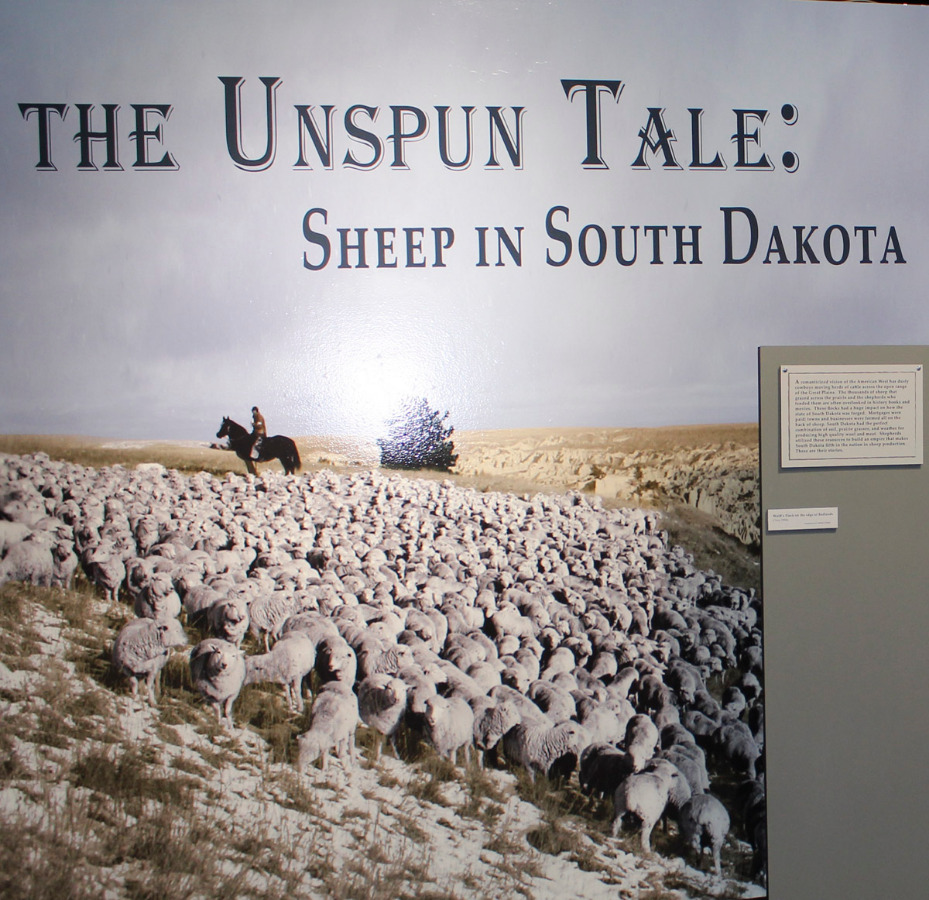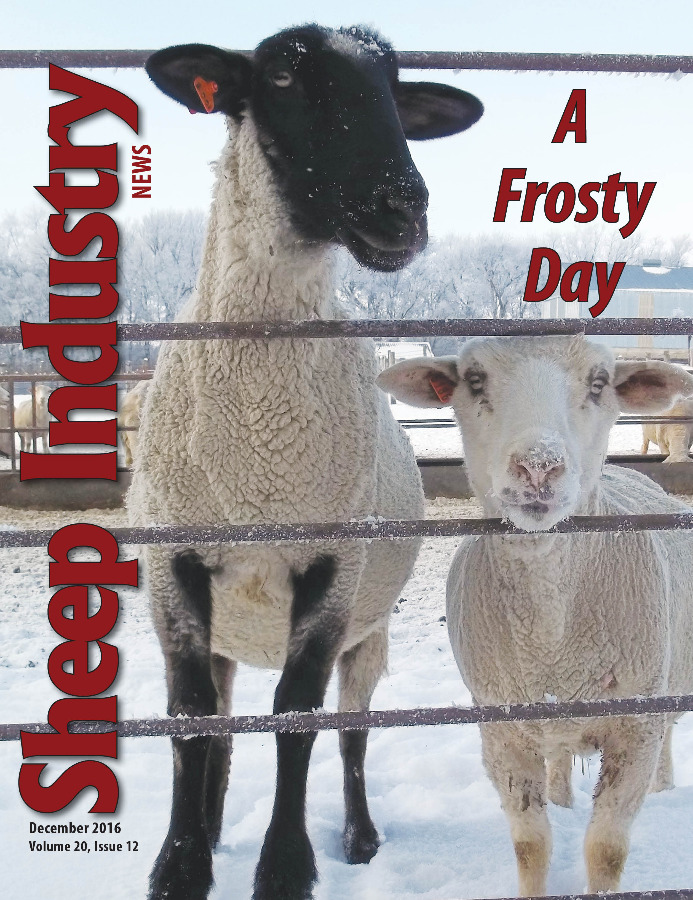SD Ag Museum Celebrates Sheep
It would be impossible to celebrate South Dakota agriculture without devoting significant time to the role played by sheep and the ranchers who raised them. The Unspun Tale: Sheep in South Dakota hoped to set the record straight when the exhibit opened earlier this year at the South Dakota Agricultural Heritage Museum in Brookings.
Seen by thousands of visitors from all across the world, the exhibit was originally supposed to wrap up this month. But popular demand warranted an extension that will allow the exhibit to continue telling the story of South Dakota sheep producers through Oct. 1, 2017.
 “When I became director two years ago, I wanted a new exhibit,” says Gwen McCausland, museum director. “Our exhibit schedule had been stagnant, and we had a collection that really focused on the eastern part of the state. I really wanted to expand our scope and include something from the western side.”
“When I became director two years ago, I wanted a new exhibit,” says Gwen McCausland, museum director. “Our exhibit schedule had been stagnant, and we had a collection that really focused on the eastern part of the state. I really wanted to expand our scope and include something from the western side.”
McCausland turned to what she knew: sheep. Raised on a North Dakota sheep farm and active in fiber arts, she conceived a plan to document the state’s sheep heritage.
“I thought that I knew a little bit about it, so it would be easy,” she says. “What I found was a juggernaut of a topic. I was never aware of just how vital the sheep industry was in South Dakota. I grew up in the industry in the 1990s – not exactly a thriving time for sheep. But I packed up my 6-month-old and my mom and we visited ranches across the western part of the state. What we found was amazing.”
While Hollywood and media have long romanticized the American cowboy, shepherds didn’t evoke the same mythical image. As the country industrialized and moved away from its agricultural roots, shepherds were essentially forgotten.
“Dave Ollila (South Dakota State University Extension Sheep Field Specialist) told me about the old saying, ‘You raise sheep for the money and cattle for the prestige.’” McCausland recalls. “I’d never heard that, because we certainly didn’t raise sheep for the money when I was growing up. I learned that up until World War II, wool was king. But then other fibers took hold, and the men fighting around the world suffered post traumatic stress disorder like effects from eating nothing but bad, canned mutton.”
While those developments certainly proved detrimental to the industry, sheep remained throughout western South Dakota.
“Sheep were always good on marginal land, and they provided two sources of income with the meat and the wool,” McCausland says. “That’s what made them so great for the state. But modern-day farm equipment allowed for the farming of lands that hadn’t previously been used for much else.”
As she developed a sense of the state’s sheep history, McCausland then had to turn her thoughts to developing an exhibit that would inform and entertain at the same time. She passed on a simple timeline format, instead opting to document the industry through the steps in the production process.
“I wanted the full spectrum covered in each section, so people wouldn’t think that range production was something that only happened in the 1800s. We cover herders, dogs, wagons, the lambing pen and shearing,” she says. “But we also talk about the wool buyers and mills from the past. A future section talks about where the industry goes from here. Lots of modern-day consumers want to know where their food and fiber are coming from, which is an important development for the future of the sheep industry.”
The exhibit lends itself to a variety of educational programs, including fiber arts, range management and cooking. McCausland said many who tour the museum have no idea what their socks are made from.
“Bringing awareness about why wool is worth that investment is one way in which we can continue to support our state’s agriculture industry,” she said.
The Unspun Tale: Sheep in South Dakota is made possible by donations from the South Dakota Sheep Growers Association, Clarkson Family Foundation, The Shepherd’s Gift: GM1 for HD, Brookings Fiberworks Guild and other private donors. The following contributed photos, memorabilia, oral histories or wool to the exhibit: Aeschlimann Family, American Sheep Industry Association, Mary Buchholz, Bill Clarkson, Steve & Pamela Clements, Rufus & Patty DeZeeuw, Paul Erk, Bill Fuller, Dr. Jeffery Held, Dr. Larry & Sue Holler, Lee Farms, David & Marjorie Junek, Max Matthews, Dave Ollila, Orwick Family, Lynn & Dianne Perry, Myrene & Andrew Peterson, Larry Prager and Kevin Quail. Bemidji Woolen Mills and Fairbault Woolen Mills were in-kind sponsors.
To learn more, visit AgMuseum.com.


